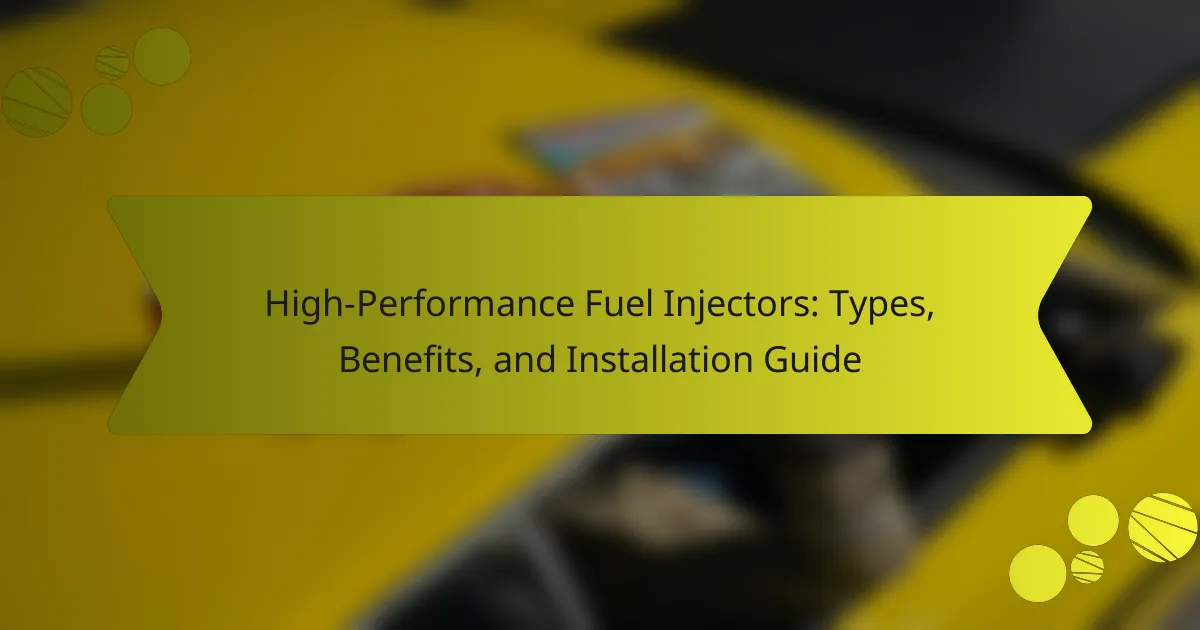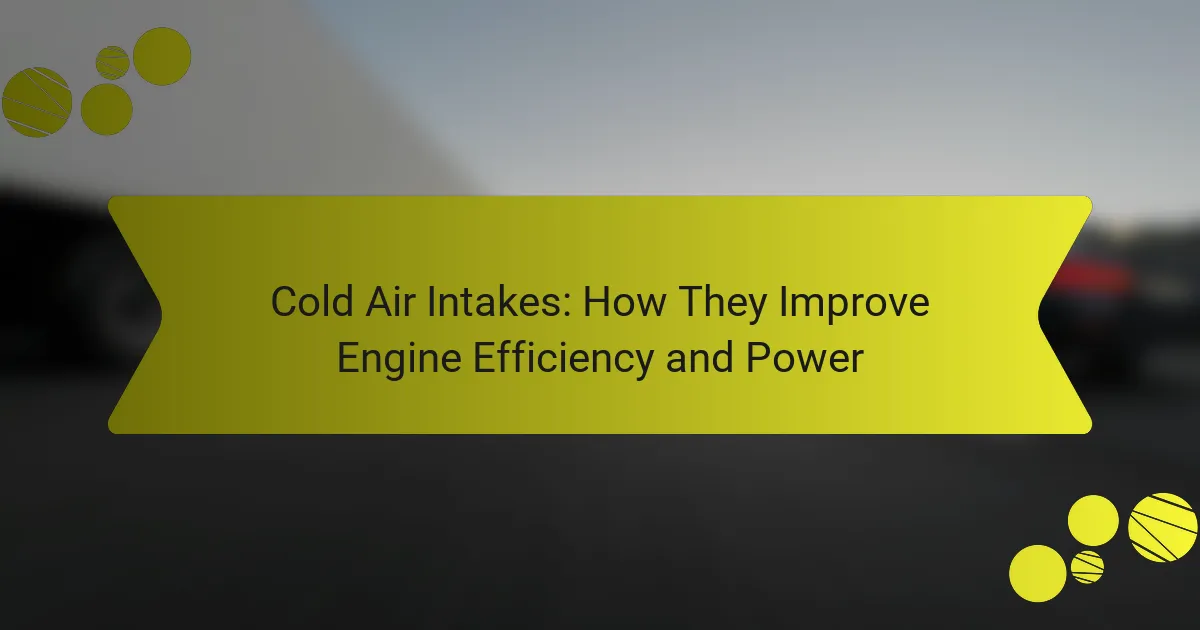High-performance fuel injectors significantly enhance engine efficiency and power output. This article explores the various types of injectors, their specific benefits, and essential installation guidelines. Understanding these components can optimize combustion and improve vehicle performance. Proper selection and installation are crucial for achieving desired results in modified engines.
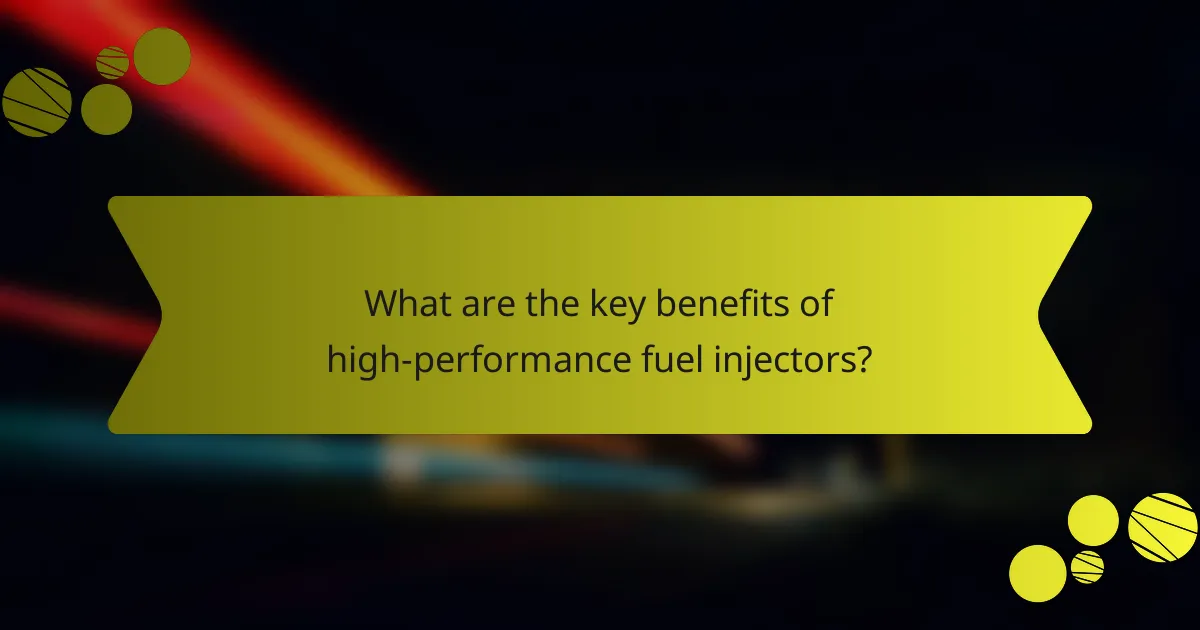
What are the key benefits of high-performance fuel injectors?
High-performance fuel injectors enhance engine efficiency, power output, and throttle response. They provide precise fuel delivery, improving combustion and reducing emissions. Their unique design can handle higher pressures, leading to better performance in modified engines. Additionally, they often feature advanced materials for durability and longevity.
How do high-performance fuel injectors enhance engine efficiency?
High-performance fuel injectors significantly enhance engine efficiency by optimizing fuel delivery and improving combustion. They achieve this through precise timing, increased flow rates, and atomization, resulting in better fuel-air mixtures. This efficiency can lead to improved horsepower and reduced emissions, making them a valuable upgrade for performance vehicles.
What impact do high-performance fuel injectors have on horsepower?
High-performance fuel injectors significantly increase horsepower by optimizing fuel delivery. They enable more precise fuel atomization and higher flow rates, enhancing engine efficiency. This improvement can lead to a horsepower increase of 10-20% depending on the vehicle and tuning. Additionally, these injectors often support higher engine RPMs, allowing for greater power output. Proper installation and calibration are essential to fully realize these benefits.
Why are high-performance fuel injectors crucial for fuel economy?
High-performance fuel injectors significantly enhance fuel economy by optimizing fuel delivery and combustion efficiency. They provide precise control over the fuel-air mixture, leading to improved engine performance and reduced fuel consumption. Enhanced atomization and faster response times contribute to better fuel efficiency, especially in high-performance applications. Regular maintenance and proper installation further ensure these benefits are realized, maximizing the overall effectiveness of the fuel system.
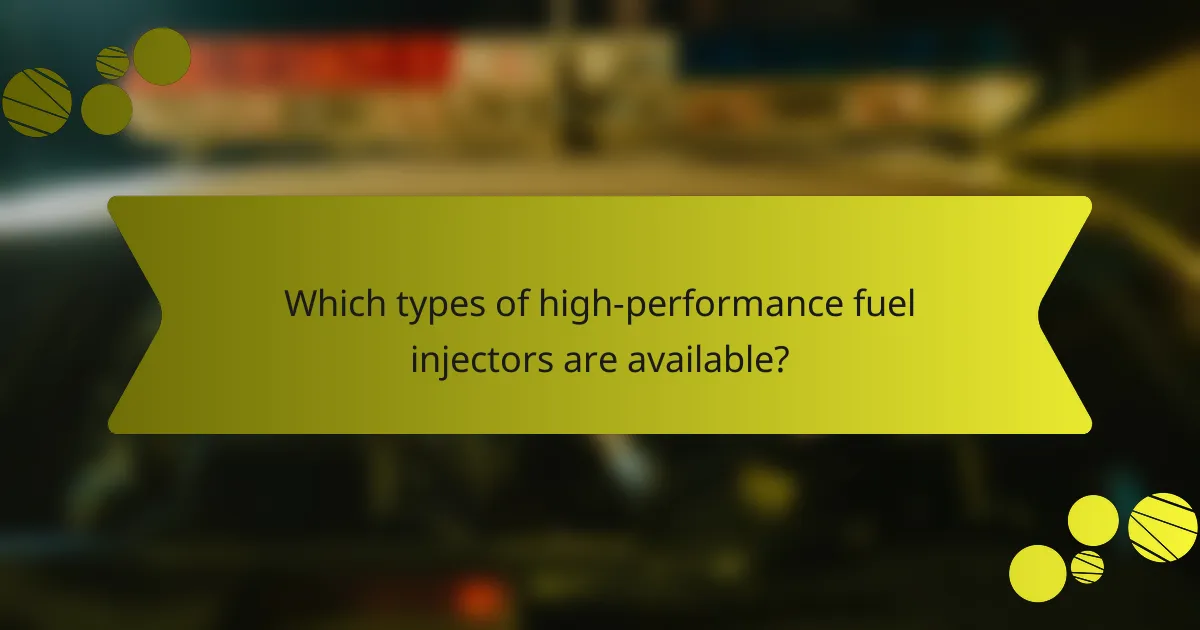
Which types of high-performance fuel injectors are available?
High-performance fuel injectors are available in several types, including port fuel injectors, direct fuel injectors, and dual fuel injectors. Each type offers specific benefits tailored to performance needs.
Port fuel injectors spray fuel into the intake manifold, optimizing fuel-air mixture and improving throttle response. Direct fuel injectors inject fuel directly into the combustion chamber, enhancing efficiency and power output. Dual fuel injectors combine both methods, allowing for versatile performance tuning.
These injectors vary in design, flow rate, and application compatibility, catering to different engine setups and performance goals. Selecting the right type is crucial for maximizing engine performance and efficiency.
What distinguishes port fuel injectors from direct fuel injectors?
Port fuel injectors spray fuel into the intake manifold, while direct fuel injectors deliver fuel directly into the combustion chamber. This distinction affects performance, efficiency, and emissions. Port injectors enhance mixing with air, improving combustion, while direct injectors provide more precise fuel delivery, optimizing power and efficiency.
How do multi-port fuel injectors compare to single-port options?
Multi-port fuel injectors provide better fuel atomization and efficiency compared to single-port options. They deliver fuel directly into each cylinder, improving performance and throttle response. Single-port injectors, while simpler and cheaper, may lead to less efficient combustion and increased emissions. Multi-port systems are often preferred in high-performance applications for their enhanced power output and fuel economy.
What are the advantages of using high-flow fuel injectors?
High-flow fuel injectors enhance engine performance by delivering more fuel, improving power and efficiency. They support higher horsepower and torque, making them ideal for performance vehicles. Additionally, they can improve throttle response and fuel atomization, resulting in better combustion. This leads to increased acceleration and overall driving experience.
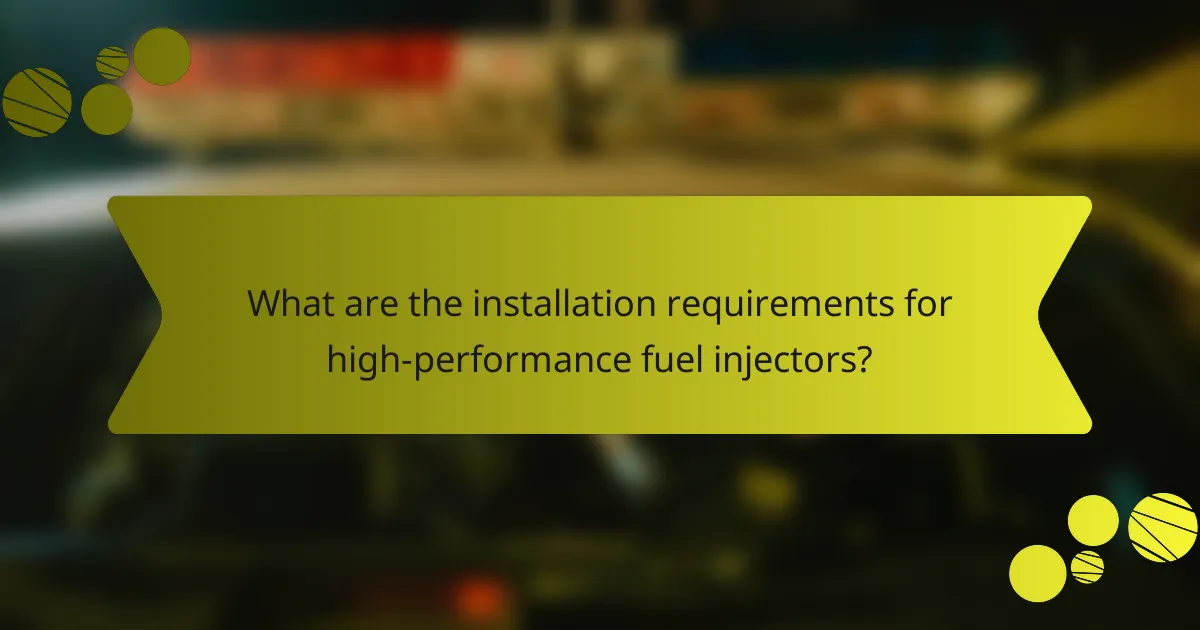
What are the installation requirements for high-performance fuel injectors?
High-performance fuel injectors require specific installation conditions. Ensure proper fuel pressure, compatible fuel lines, and adequate electrical connections.
1. Fuel Pressure: Maintain manufacturer-specified pressure levels for optimal performance.
2. Electrical Compatibility: Verify that the injector’s electrical connectors match the vehicle’s wiring.
3. Fuel Line Size: Use the appropriate diameter fuel lines to prevent flow restrictions.
4. Engine Management System: Update or tune the ECU to accommodate the new injectors.
Following these requirements enhances performance and reliability.
How can you prepare your vehicle for fuel injector installation?
To prepare your vehicle for fuel injector installation, follow these steps:
1. Disconnect the battery to ensure safety.
2. Relieve fuel system pressure by removing the fuel pump fuse and running the engine until it stalls.
3. Remove any components obstructing access to the fuel injectors, such as the intake manifold.
4. Clean the area around the injectors to prevent debris from entering the fuel system.
5. Inspect the fuel rail and connections for wear or damage before proceeding with installation.
What tools are necessary for installing high-performance fuel injectors?
To install high-performance fuel injectors, you need specific tools. Essential tools include a ratchet set, torque wrench, fuel line disconnect tool, and O-ring lubricant. Additional tools may involve a multimeter for electrical testing and a vacuum gauge for performance checks.
What are the common steps in the installation process?
The common steps in the installation process of high-performance fuel injectors include preparation, removal of old injectors, installation of new injectors, reassembly, and testing.
1. Preparation: Gather necessary tools and materials, including new fuel injectors, gaskets, and cleaning supplies.
2. Removal of old injectors: Disconnect the fuel lines and electrical connectors, then remove the old injectors from the fuel rail.
3. Installation of new injectors: Install the new injectors, ensuring proper alignment and sealing with new gaskets.
4. Reassembly: Reattach the fuel rail, reconnect fuel lines and electrical connectors, and ensure all components are secure.
5. Testing: Start the engine, check for leaks, and verify the performance of the new injectors.
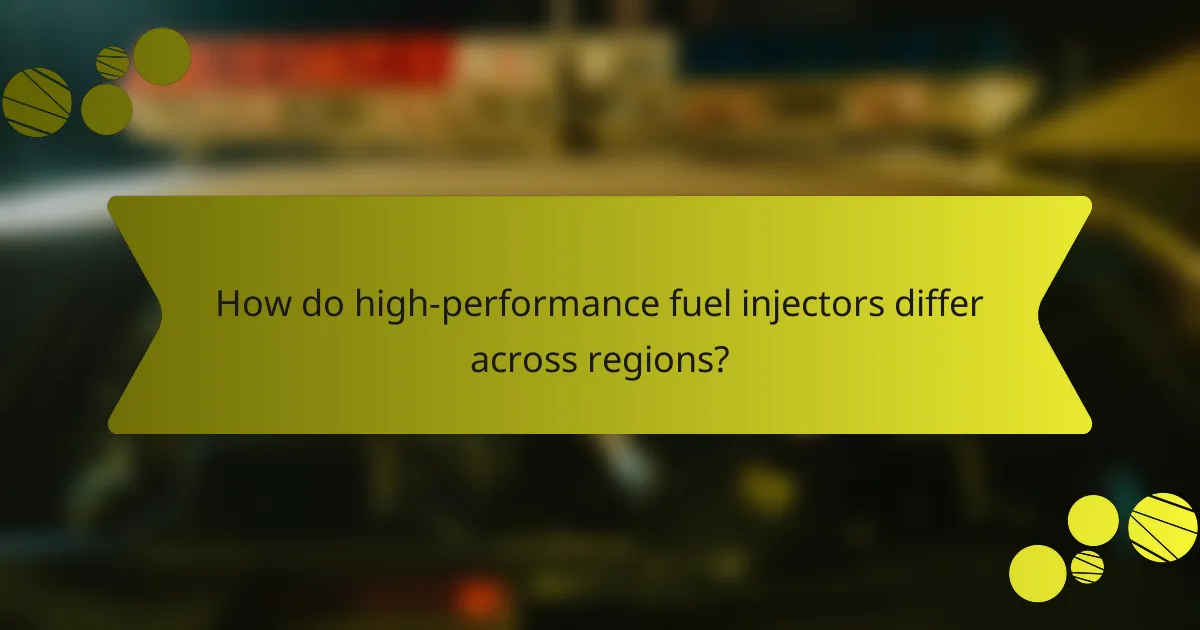
How do high-performance fuel injectors differ across regions?
High-performance fuel injectors vary by region due to differing emissions regulations, fuel quality, and vehicle performance expectations. In regions with stringent emissions standards, injectors often incorporate advanced technologies to minimize pollutants. Conversely, areas with lower fuel quality may require injectors designed for better fuel atomization and efficiency. Additionally, regional preferences for performance can influence injector specifications, leading to unique designs tailored for specific markets.
What regional regulations affect the use of high-performance fuel injectors?
Regional regulations on high-performance fuel injectors vary significantly. Many regions enforce standards on emissions, safety, and performance. For instance, the European Union has stringent emissions regulations that impact injector design. In contrast, some regions in the United States may have more lenient regulations, allowing for greater customization. Compliance with local laws is essential to avoid penalties and ensure vehicle performance.
How do consumer preferences for fuel injectors vary by country?
Consumer preferences for fuel injectors vary significantly by country due to factors like vehicle types, fuel quality, and performance expectations. In the United States, high-performance fuel injectors are favored for their ability to enhance engine efficiency and power. Conversely, European consumers often prioritize fuel efficiency and emissions compliance. Asian markets may show a preference for cost-effective options that balance performance and affordability. Additionally, local regulations and automotive trends influence these preferences, leading to diverse choices in fuel injector technologies across regions.

What are the unique features of premium high-performance fuel injectors?
Premium high-performance fuel injectors feature enhanced atomization, increased flow rates, and improved durability. These injectors often utilize advanced materials and precision engineering to optimize fuel delivery. Their unique designs allow for better fuel-air mixture, leading to higher engine efficiency and performance. Additionally, they may include features like adjustable spray patterns and compatibility with various fuel types.
How do advanced materials improve the durability of fuel injectors?
Advanced materials significantly enhance the durability of fuel injectors by resisting wear, corrosion, and thermal stress. These materials, such as ceramics and advanced alloys, provide superior strength and longevity compared to traditional metals. As a result, fuel injectors maintain optimal performance over extended periods, reducing maintenance costs and improving engine efficiency. Enhanced durability also contributes to better fuel atomization, leading to improved combustion and reduced emissions.
What innovative technologies are being integrated into modern fuel injectors?
Modern fuel injectors increasingly integrate innovative technologies such as direct injection, electronic control units, and advanced materials. These enhancements improve fuel atomization, increase efficiency, and reduce emissions. Direct injection allows for precise fuel delivery, while electronic control units enable real-time adjustments for optimal performance. Advanced materials enhance durability and resistance to heat, contributing to longevity and reliability.
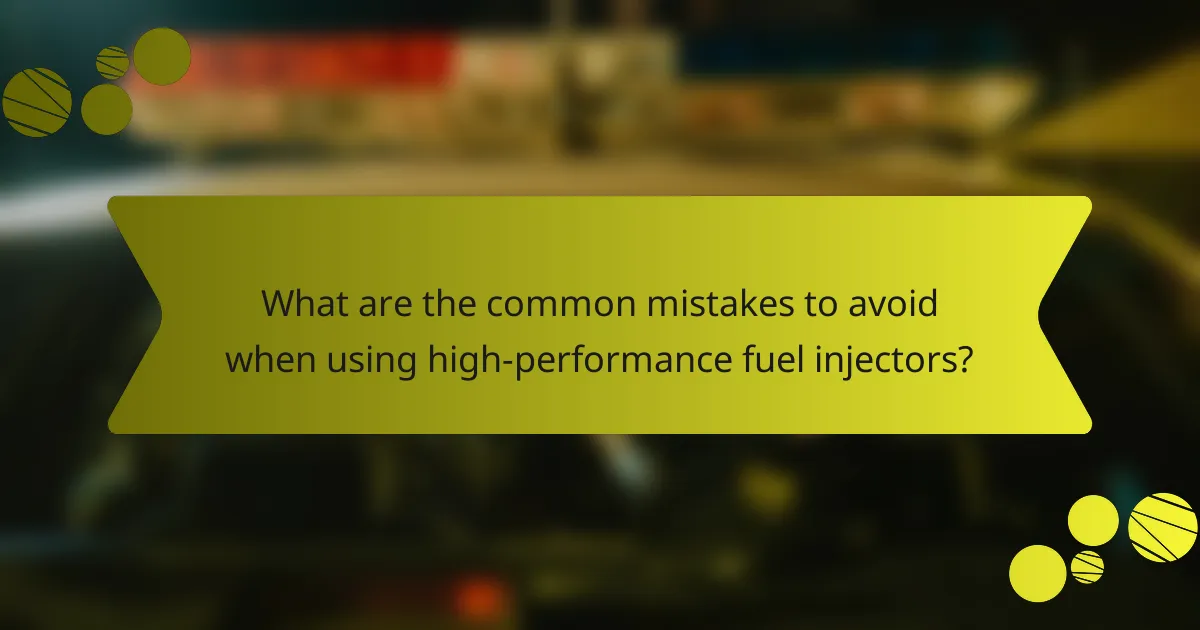
What are the common mistakes to avoid when using high-performance fuel injectors?
Common mistakes to avoid when using high-performance fuel injectors include incorrect installation, using incompatible fuel types, neglecting regular maintenance, and failing to calibrate the fuel system. These errors can lead to performance issues and reduced engine efficiency. Properly installing injectors ensures optimal fuel delivery, while using the correct fuel prevents damage. Regular maintenance, such as cleaning, keeps injectors functioning effectively. Calibration aligns the fuel system with engine requirements, enhancing overall performance.
How can improper tuning affect fuel injector performance?
Improper tuning can significantly impair fuel injector performance by causing inconsistent fuel delivery. This inconsistency may lead to engine misfires, reduced power output, and increased emissions. Additionally, incorrect tuning can result in poor fuel economy, as the engine may run too rich or too lean, stressing the fuel injectors. Ensuring precise tuning optimizes injector function, enhancing overall engine efficiency and longevity.
What are the signs of fuel injector failure to watch for?
Signs of fuel injector failure include rough engine idling, decreased fuel efficiency, and engine misfires. Additional symptoms are increased emissions and unusual noises from the engine. Monitoring these indicators ensures optimal performance of high-performance fuel injectors.
What best practices should you follow to maintain high-performance fuel injectors?
To maintain high-performance fuel injectors, regularly clean and inspect them, use high-quality fuel, and monitor engine conditions. These practices ensure optimal performance and longevity.
1. Clean injectors every 30,000 miles to remove deposits.
2. Use fuel additives designed for injector cleaning.
3. Check fuel pressure regularly to prevent damage.
4. Inspect electrical connections for corrosion or wear.
5. Replace filters to avoid debris entering the system.
6. Monitor engine performance for signs of injector issues.
